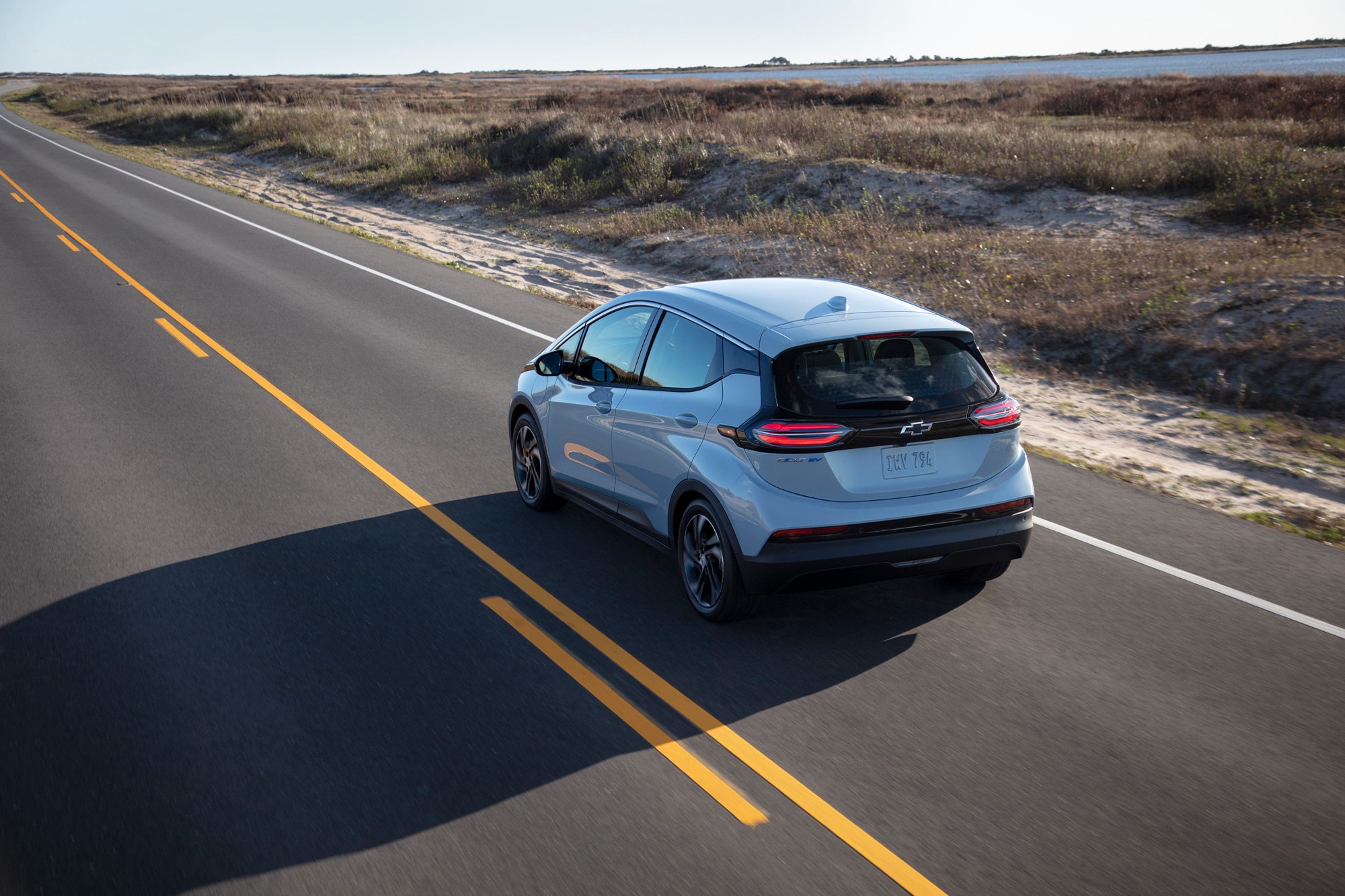What Does MPGe Mean?
In order to compare the efficiency of gas, diesel, and hybrid vehicles with that of EVs and plug-in hybrids, the EPA created a new unit of measurement.
 Chevrolet
Chevrolet
For nearly 50 years, the government has required automakers to post a vehicle’s fuel-economy ratings on its window sticker (also known as a Monroney label), so consumers can make informed decisions about their vehicle purchases based on how many miles to the gallon (mpg) it gets. But how can you do that for vehicles that don’t burn liquid fuel?
Miles Per Gallon of Gasoline-Equivalent Explained
In 2010, the Environmental Protection Agency (EPA) had an answer: it created a new metric for efficiency called “miles per gallon of gasoline-equivalent” or MPGe. MPGe aims to equate the energy contained in a gallon of gas with the energy stored by alternative fuels, such as electricity, hydrogen, and compressed natural gas. (Note: Non-plug-in hybrids report fuel economy in mpg, not MPGe, as they cannot charge or operate without using liquid fuels.) For instance, the EPA says a gallon of gas releases the same energy as 33.7 kWh of electricity, so MPGe ratings for electric vehicles (EVs) and plug-in hybrid electric vehicles (PHEVs) indicate how far they can travel on that amount of power.
With this information, someone in the market for a new car could look at the fuel-economy ratings of two differently powered vehicles — say, a Tesla Model S and an Audi A6 — and see that the former with up to 120 MPGe combined, is far more efficient than the latter with 26 mpg at best.
MPGe is not the only factor of efficiency
That said, MPGe doesn’t paint a complete picture. You also need to consider driving range, as the MPGe rating doesn’t account for a battery’s capacity which plays a crucial role in how far an EV can travel. Case in point: the 2022 Chevrolet Bolt EV and Tesla Model S both have a combined EPA rating of 120 MPGe. However, the Tesla’s estimated range of 405 miles is 1.6 times greater than the Chevy’s as the Model S has significantly more battery capacity than the Bolt. Fortunately, an EV’s Monroney lists the vehicle’s estimated electric (and for PHEVs, electric and gas) range.
Additionally, MPGe doesn’t help shoppers calculate the operating costs of different models. After all, unlike gasoline or diesel, electricity isn’t sold by the gallon. Thankfully, modern window stickers include an estimate of each vehicle’s annual fuel costs, assuming the vehicle travels 15,000 miles a year and electricity costs $0.12 per kWh.
Your driving habits and utility cost may ultimately differ, so the EPA also tells you how much electricity (in kilowatt-hours) an EV or PHEV consumes in 100 miles of driving. Once you know this figure, your vehicle’s range, your utility rates, and how much you intend to drive the car per year, you can work out rough estimates for how often you need to charge your EV or PHEV, and what that will cost you.
You can check and compare fuel-economy ratings for vehicles on your shopping list by visiting the EPA’s website at FuelEconomy.gov.
Written by humans.
Edited by humans.
 Evan McCausland
Evan McCauslandCar, truck, train, or bus—if a vehicle has wheels, chances are Evan McCausland is interested in it. More importantly, he’s interested in helping others learn more about cars and trucks, especially when it comes time to make a decision on their next vehicle purchase. For nearly two decades, he’s been fortunate to have the opportunity to do just that, writing for major automotive publications, automotive clubs, and automakers alike.
Related articles
View more related articles